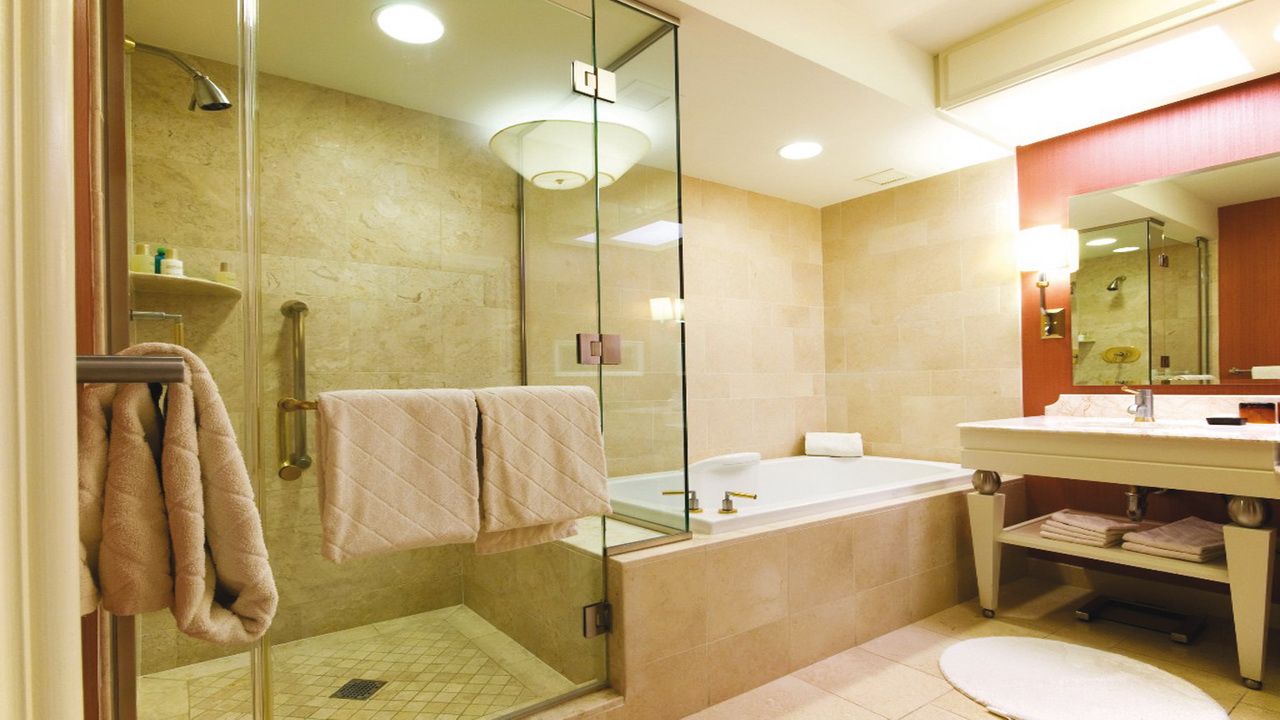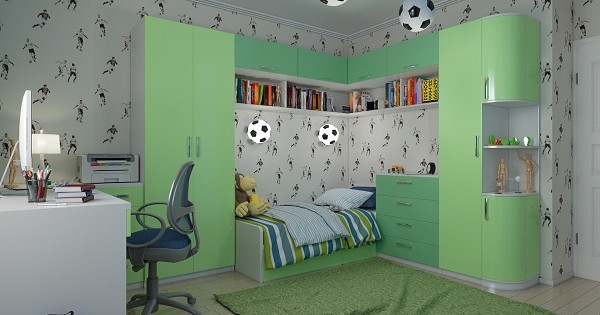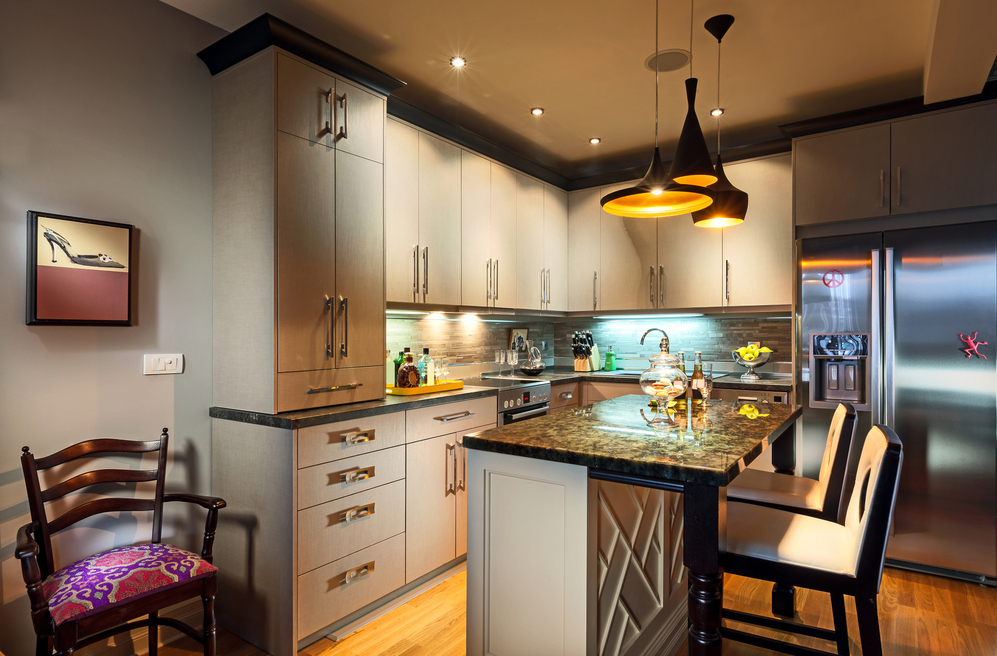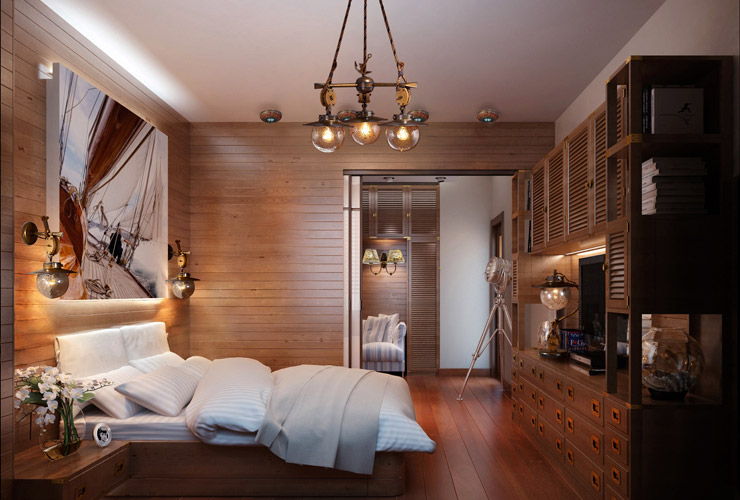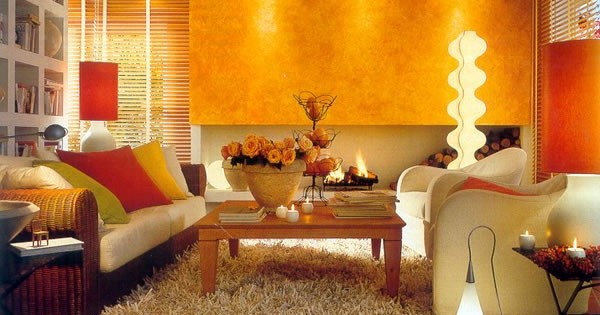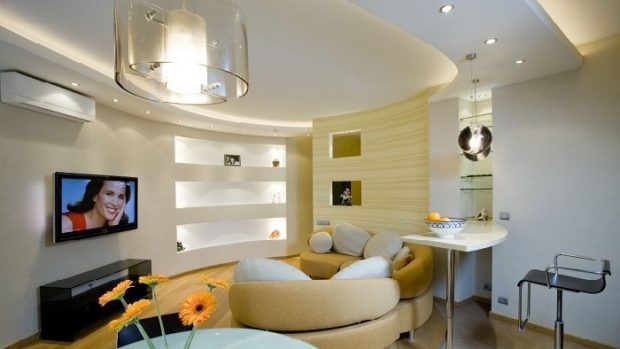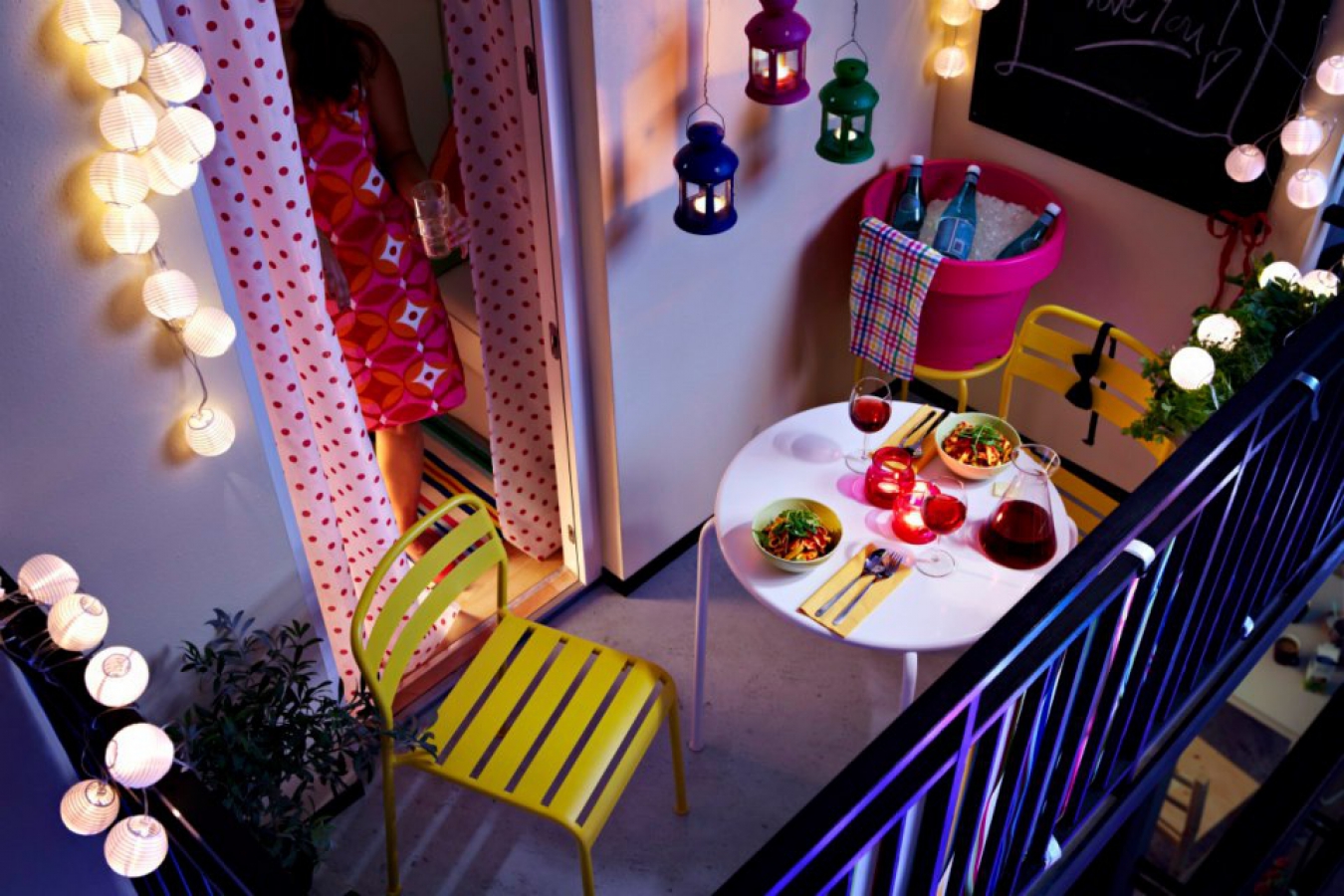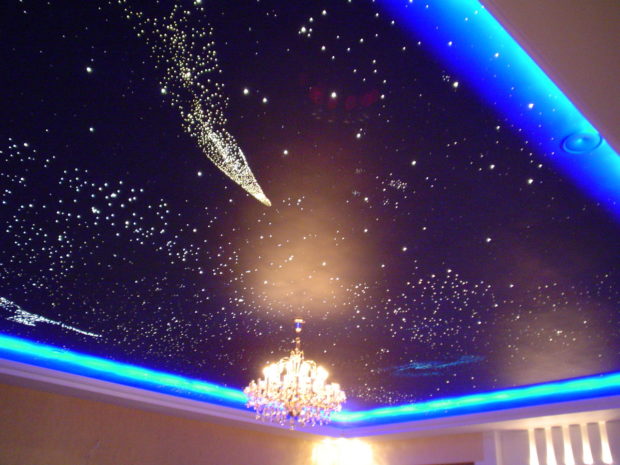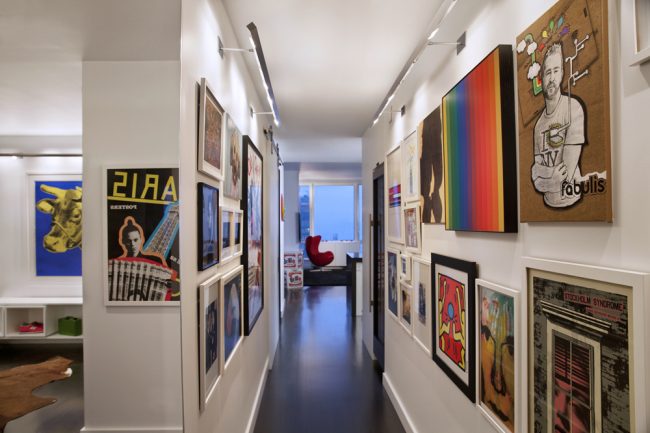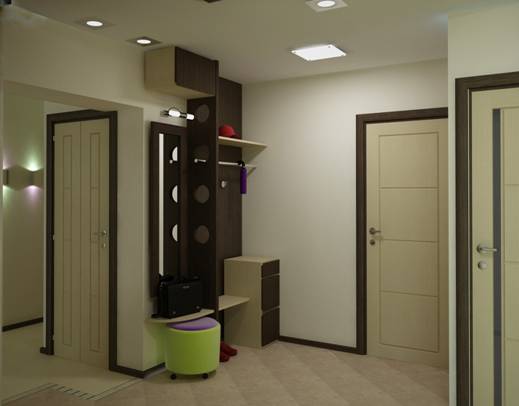9 tips for lighting the bathroom: design, choice of fixtures
Lighting bathroom with a competent approach, it will fulfill not only its primary function, but also some others. Lamps can decorate the interior, visually expand even a small room. But when choosing them, you need to be extremely careful, because the combination of electricity and water in the bathroom requires compliance with safety regulations. We are offering to you Check out some helpful bathroom lighting tips..
No. 1. How many fixtures are needed?
Number of lighting fixtures in the bathroom depends directly on its area. If the room is completely tiny, and its area is about 5 m2then enough of the chandelier in the center of the ceiling with two to three lamps. But even if the bathroom is small, it’s better to light up washbasin area and mirrorsso that all cosmetic procedures would be much easier.
If the bathroom is spacious enough, then it is necessary to provide for zone lighting, the features of which will depend on the configuration of the room, design ideas and some other factors.
It is important to consider a lot of other factors that affect lighting bathroom. These include:
- interior styleor rather the chosen color scheme, because, as you know, light shades reflect light fluxes more, which means that the room will seem more illuminated. The same can be said of glossy, mirror and glass surfaces;
- height at which the fixtures will be installed, because the closer they are to a person, the more bright light they give;
- type of fixtures.
It is better to determine the number and location of lighting devices yet at the stage of repair workin order to avoid unnecessary trouble and waste in the future.
No. 2. What type of lamp to choose?
Today, the choice of lighting devices is so vast that everyone can choose the option that is most suitable for their wishes. So, by type of surface location fixtures can be:
- open
- embedded. This option is preferable for miniature bathrooms with not very high ceilings.
Depending on the location fixtures can be:
- ceiling. This is an unchanging classic. Each bathroom must be equipped with at least one ceiling lightwho will be responsible for the overall light in the room;
- wall mounted. These are lamps that are designed to highlight certain functional areas of the room;
- floor lamps perform more decorative function, they are able to add a twist to the interior of the room, visually expand the space of the room.
Each of the fixtures used can perform one or several of these functions:
- work lighting;
- decorative lighting;
- directional lighting;
- general lighting.
Today, light sources can be used different types of lamps:
- incandescent lamps;
- halogen;
- luminescent;
- LED light.
Everyone has the right to choose the type of lamp, depending on the type of lamp or their own desire to save, but special attention should be paid to LED lights. They are considered the most economical and safe, because in the process they do not heat up. Also often used LED Strip Light, which brings a real zest to the interior of the bathroom. The only drawback of LED lamps is their high price.
No. 3. How to position the light sources in the bathroom?
Experts advise very cautious approach to the issue. choosing the location of lighting in the bathroom. Experience tells you what you need take into account some nuances, among which:
- lighting should be uniformTherefore, the following rule should always be taken into account. The more light sources in the room, the lower their power should be;
- the light must be properly distributed, and the lamps are located in all functional areas of the bathroom;
- important avoid glare, and for this it is not necessary to direct the lamps perpendicular to reflective surfaces: it is better if they are located at an angle;
- A common mistake is to place one lamp directly above the mirror. Often in this case, the reflection will be slightly distorted. It is better to use mirror lighting on the sides, or on top and sides;
- a highlight in the interior can be made thanks to color spots: colored shades, original inserts ceramic tiles. But it is better not to place such details in the area of the mirror, so as not to distort the reflection;
- fans of non-standard ideas can be advised to experiment with the location of the LED strip: it can be placed under the side of the bath, under windowsill etc.;
- it’s better to connect different fixtures in the bathroom separate lines, because not every time it will be necessary to turn on all the lighting at once.
Number 4. The need for ceiling lighting
As already mentioned, one source of lighting can not do even in the smallest bathroom. Function general lightingAs a rule, they perform ceiling lights, which must be present in the bathroom. So, for ordinary ceilings it’s better choose a chandelier, and for pendant you can use recessed lights. It is also worth considering the height of the room, and do not have long chandeliers in low rooms. Great option - spotlightwhose light direction can be adjusted to obtain a sufficient level of lighting in any area of the room.
The shape, design and color of lighting fixtures can be very different, and here the choice should be based on personal preferences, the design of the room, but not forgetting the functionality.
No. 5. What functional areas to highlight in the bathroom?
If your bathroom is quite spacious, then it is necessary to highlight several zones with their own lighting:
- washing area, where, naturally, are located washbasin and mirror;
- swimming area with bath or shower stall;
- free area for changing clothes, folding clothes or washing.
Moreover, You can highlight and furniture items: shelves, lockers, bedside tables can have small built-in lamps that provide a soft unobtrusive light that can illuminate the entire contents of the cabinet and facilitate the search for the necessary item.
No. 6. Mirror and washbasin lighting
The mirror must be lit so that the reflection in it is as natural as possible, without unnecessary shadows and does not distort the color. In this case, it is better to abandon the lights under the mirror, as well as from colored lighting, which will create unnecessary color spots on your reflection. Better if the light will be as soft as possible, so the shades can be matte or white. The best option is the location of the light sources on the sides or around the perimeter of the mirror.Lamps can be used absolutely any type, but it is better that the received light is as close as possible to natural daylight.
Number 7. Bath or shower lighting
Bathroom lighting is optional; rather, it performs cleanly decorative rolecreating a cozy and relaxing atmosphere. So, you can meet several fixtures in the shower, hang a few sconces over the bath, or even arrange the bottom lighting in the bath. Everyone has long known that taking a bath is more a relaxation than a hygienic procedure, and the corresponding lighting can make such a rest even more comfortable.
Number 8. Decorative Lighting Features
For sufficiently spacious bathrooms with interesting architectural details, you can use lighting that does not carry any direct functions, but is intended only to decorate the interior and create a unique atmosphere. You can highlight anything you like: steps, niches, windows, other elements of the room. Today there is even a tile in which LEDs are built in.
Separately, it should be noted floor lighting: to create it, use durable lights, such as for garden paths, and their power should be no more than 5 watts. With their help, you can create a unique interior and visually push the boundaries of the bathroom.
No. 9. Safety regulations
Where there is electricity and humidity, there is an increased risk of unforeseen situations that can be dangerous. That is why when choosing, installing and using lighting fixtures in the bathroom adhere to a number of rules:
- properly develop a lighting scheme for the bathroom, and this task can be entrusted to professionals;
- use only those fixtures that perfectly tolerate moisture;
- metal parts of fixtures must be protected from corrosion;
- lighting devices in the bath and shower must have a power of not more than 12 watts;
- it is impossible to place sconce lamps immediately above the bath;
- the risk of water entering wall or ceiling lights should be minimized. There is no place for open incandescent lamps in the bathroom, because if water drops fall on a heated glass, the lamp may burst altogether, and glass fragments will scatter around the room;
- in the bathroom no place open wiringextension cords, tees.
In conclusion
Bathroom lighting is a part that performs several functions at once, and therefore the approach to organizing lighting requires taking into account various factors: type and power of the lighting device, location, security, design, etc. With all this, it is important not to forget about safety as stage of repair workso in the future. Remember that thanks to lighting, you can create not only comfortable, but also cozy space.









